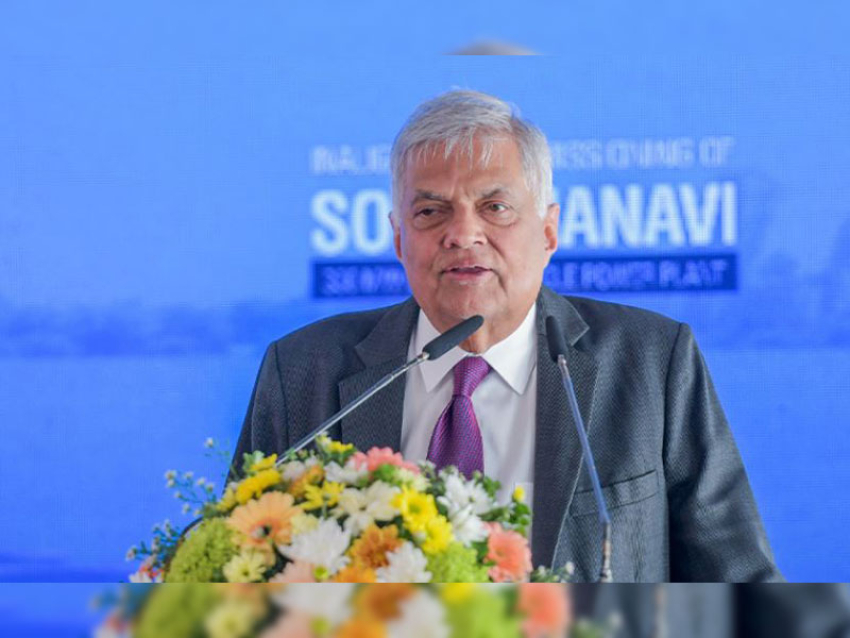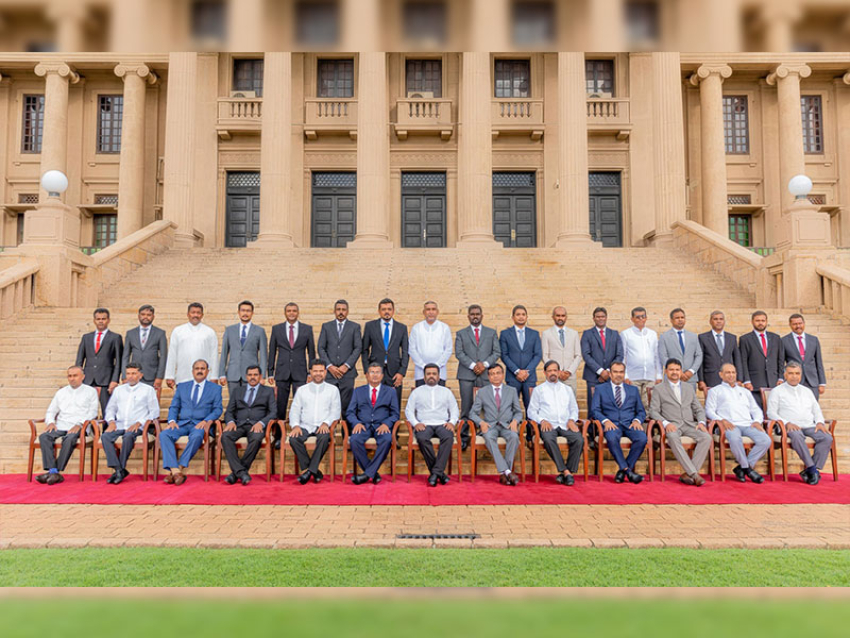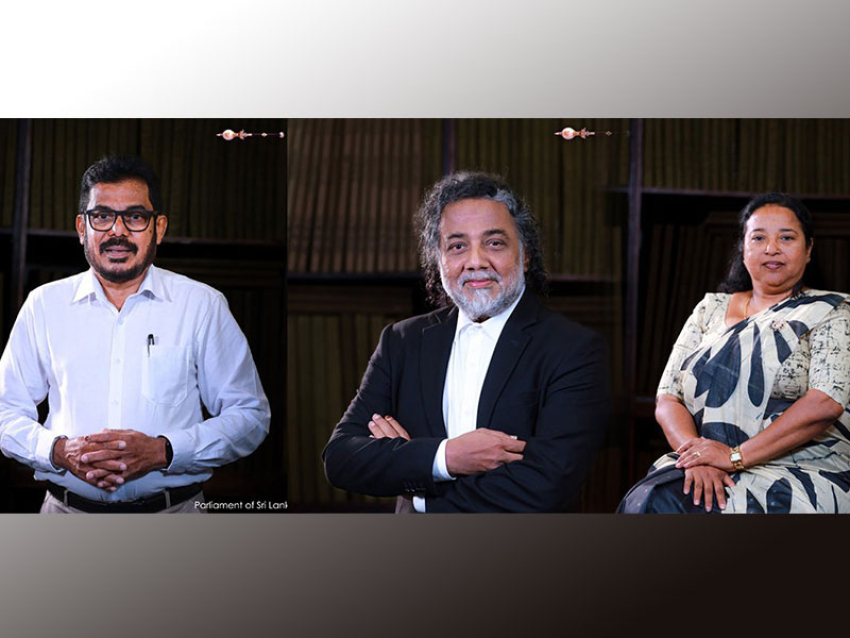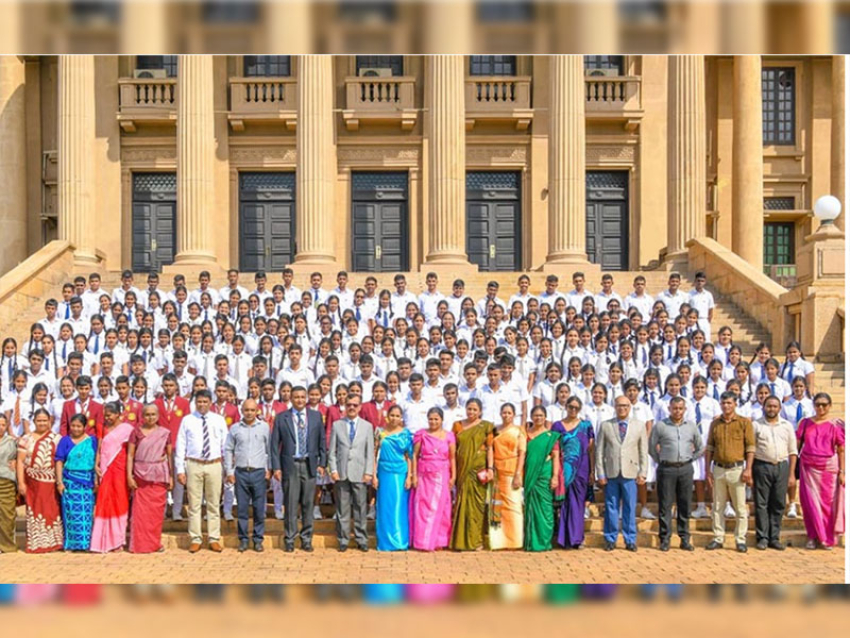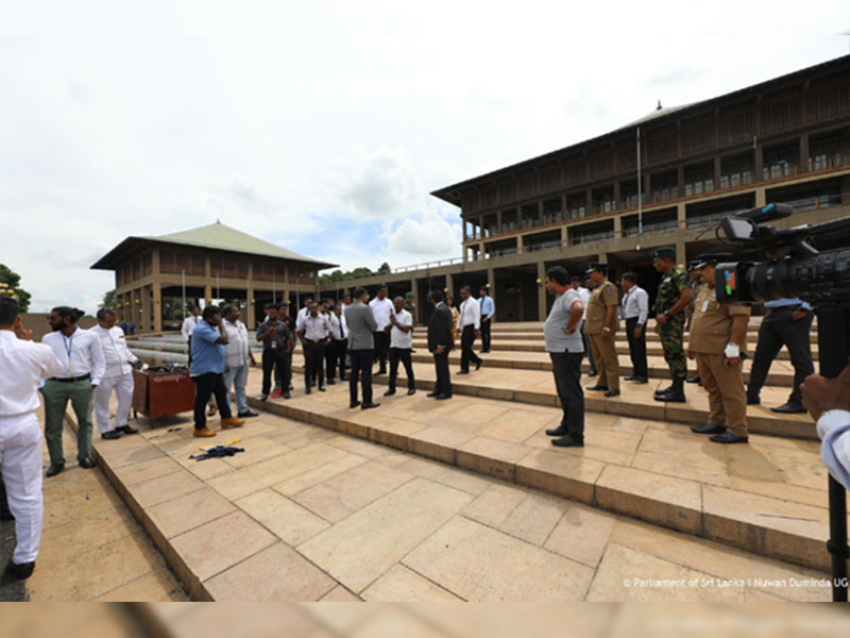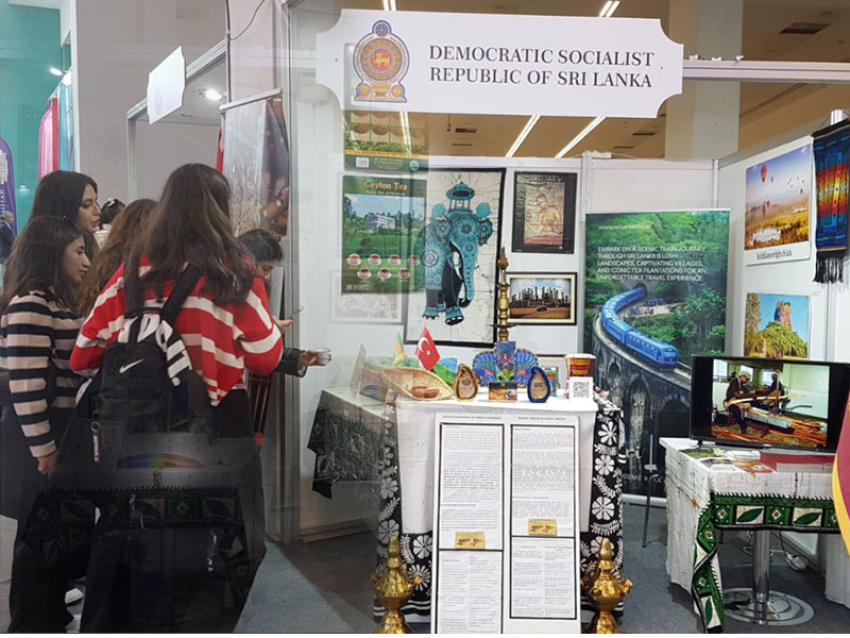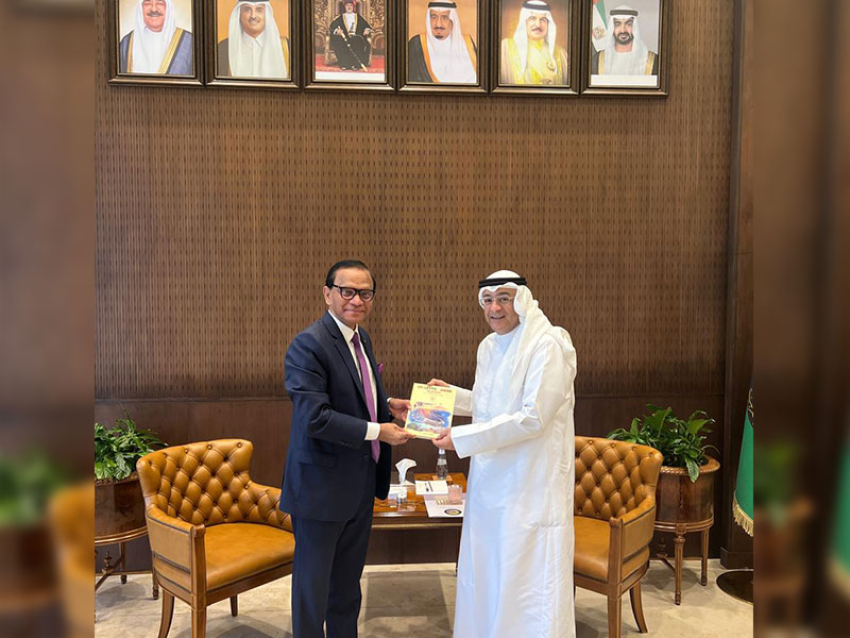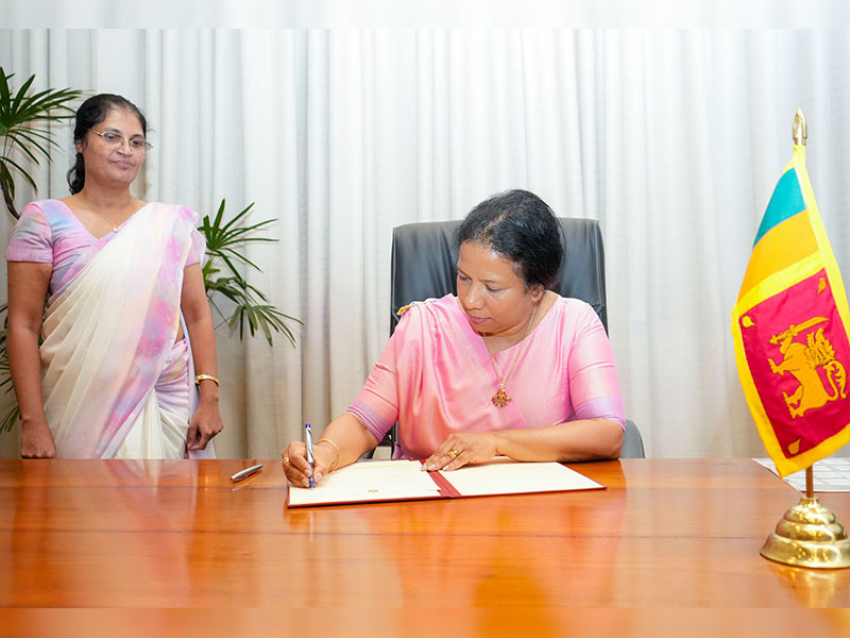President Ranil Wickremesinghe emphasized that the renewable energy sector should become the primary driver of economic growth in Sri Lanka over the next decade, similar to how the garment industry was developed as a key economic sector by the government in 1977.
The President highlighted that the government has a strategic plan to transform Sri Lanka into a surplus producer of renewable energy. He noted that there is always a market for excess energy, and expressed his willingness to participate in the proposed India-Singapore power line connection if it comes to fruition.
President Wickremesinghe made these remarks while inaugurating the first phase of Sri Lanka’s first natural gas power plant, the Kerawalapitiya “Sobadhanavi ” Combined Cycle Power Plant, this morning (28). The “Sobadhanavi ” power plant, designed by Lakdhanavi Ltd., is a significant infrastructure project aimed at expanding the country’s electricity supply, which is essential for supporting Sri Lanka’s long-term economic growth. The plant will contribute an additional 350 MW of capacity to the national grid.
The first phase of the Sobadhanavi Power Plant, commissioned today, includes an F-class gas turbine with a capacity of 220 MW. This phase is expected to significantly enhance the national grid by providing a reliable source of electricity. The second phase, set for completion by early 2025, will increase the plant’s capacity by an additional 130 MW through the installation of a steam turbine. This turbine will utilize the heat produced as a by-product of the gas turbine in the first phase, improving overall efficiency and eventually bringing the plant’s total output to 350 MW.
The Sobadhanavi Power Plant is poised to play a significant role in Sri Lanka’s economic and social development. It will provide a stable and affordable energy supply, support industrial growth, create jobs, and contribute to overall economic stability. The combined cycle process is expected to meet approximately 12% of the country’s current electricity demand, directly benefiting thousands of workers and indirectly impacting millions of citizens nationwide.
At the inauguration ceremony, President Ranil Wickremesinghe unveiled the plaque and formally declared open the Sobadhanavi Power Plant. He also inspected its operations and participated in a group photo with the staff. The President added the plant’s initial 220 MW capacity to the national grid, marking the occasion with a commemorative entry in the special guest book.
During his address, President Wickremesinghe emphasized that renewable energy is crucial for achieving the climate change program’s goals by 2050. He also noted that success in this area could open up further opportunities for Sri Lanka in both the Asian and African regions.
Expressing his views at the ceremony, President Wickremesinghe said;
“I must commend LTL for this plant. LTL has established so many power plants in the country that it is difficult to keep track—only the investors seem to know what’s happening. However, I am pleased to see LTL reach this stage. I remember when LTL began with transformers and the challenges we faced encouraging LTL to become self-sufficient.
You have delivered, and you have succeeded—congratulations. This is only the latest of your achievements. I am confident that you will pursue further developments both here in Sri Lanka, for our need, and in other locations.
Renewable energy is essential to meeting the 2050 climate change deadline. The more you specialize in renewable energy, the better your chances of success, both in this continent and in Africa. Sobadhanavi is a crucial power station for Sri Lanka, generating 350 megawatts. We are now beginning a new phase of economic development. No development can occur without power, without energy and that is what we are focusing on.
We were fortunate that the late D.J. Wimalasurendra prioritized hydro energy, and Sir John Kotelawala went ahead and built the Lakshapana complex. Then, under President Jayewardene, we developed both the Mahaweli and Samanalawewa projects, which provided surplus power for the free trade zones. The apparel industry could not have thrived without this power.
As we approach the end of our reliance on hydropower, we must explore new energy sources that align with global climate change policies. Renewable energy will be Sri Lanka’s next area of focus. As the Minister knows, we are planning for Sri Lanka to become a surplus producer of renewable energy. There will always be a demand for surplus energy, and if the India-Singapore power line becomes a reality, we must join in. This is the future, and that is why renewable energy must be our growth sector for the next decade, much like the apparel industry was in 1977.
The energy sector is a significant part of this growth. We must maximize what we have, and green hydrogen is the next frontier, still in the early stages of development elsewhere. Australia is working to become a green energy superpower, and we have about 50 gigawatts of energy to utilize. We cannot let obstacles prevent this energy from being used. If necessary, new laws should be enacted to expedite the construction of power plants and quickly resolve any objections. This approach will ensure we maximize our potential not only in renewable energy but also in green hydrogen.
Imagine the possibilities if green hydrogen becomes viable for our three forces, especially the Navy. Imagine Sri Lanka becoming a logistics centre powered by green hydrogen. The power sector’s potential is vast, not only for energy but also for technological advancement. Manufacturing alone is not enough; we must integrate technology across all fields.
We also need skilled engineers and professionals. Many of our best are leaving the country, so the government plans to establish four technological universities. Prime Minister Modi has agreed to provide us with a campus of the Chennai IIT, which we hope will eventually become a university in Galaha. The first technology university will be in Kurunegala, the second in Sithawaka or Kithulwala, and the third in Siyane Korale, where we are evaluating possible locations.
These four institutions, along with expanded facilities at the University of Peradeniya, Moratuwa, and others, will prepare us for the future. Beyond technology, we are investing heavily in artificial intelligence. Our AI policy is in place, and the Technology Development Bill will soon be passed.
We must focus on technology, the green economy, and the digital economy. Only then will Sri Lanka be ready for a new era of growth. I won’t take up any more of your time. I had no problem discussing the green economy since I am not contesting under the UNP government. I wish you all the best in your endeavours.”
Minister of Power and Energy Kanchana Wijesekera,
“Although plans for LNG power plants have been discussed in the power sector for a long time, it took us considerable time to bring them to fruition. Today marks a significant turning point, with Lakdhanavi taking the lead on this investment to enhance our country’s energy security and reduce electricity sector costs. This plant has now been handed over to the people.
It is important to remember that there was a time when the number of hours of power outages in this country exceeded the hours of electricity supply. By March 2022, power cuts lasted up to 16 hours a day due to the inability to provide the necessary fuel, coal, and other supplies to the power plants. Government institutions, including the Electricity Board, were experiencing severe economic challenges.
Increasing electricity tariffs is never a popular decision. However, President Ranil Wickremesinghe provided the leadership and determination needed to make such difficult decisions. Thanks to his guidance as head of state, we were able to introduce a cost-reflective pricing formula for electricity, which allowed us to cover expenses. Without the ability to pay the Electricity Board, we would not be able to undertake projects like this. As a result, we are now in a position to provide relief to the people by implementing these substantial projects, and we expect to significantly reduce electricity costs over the next two to three years.”
The inauguration was attended by Dr. Satyanjal Pandey, Deputy High Commissioner of India to Sri Lanka, Dr. Sulaksha Jayawardena, Secretary of the Ministry of Power and Energy, Nalinda Ilangakoon, Chairman of the Electricity Board, as well as the chairpersons and board members of Lakdhanavi, Sobadhanavi , and LTL, along with engineers, staff from the power plant, and other distinguished guests.

